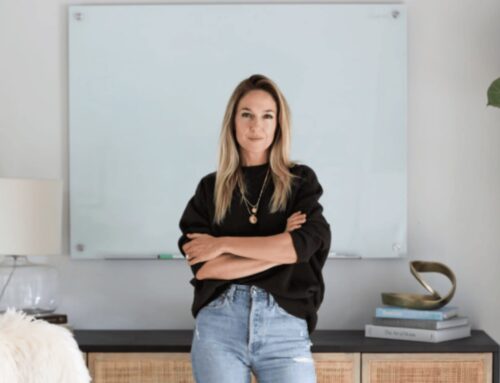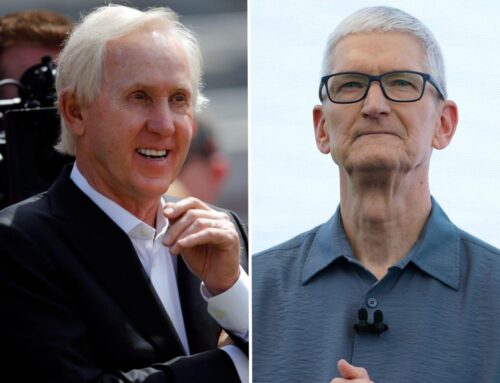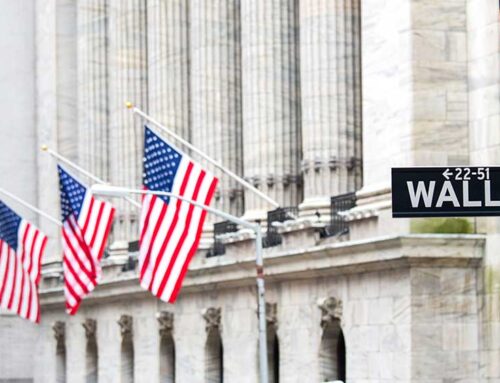Photo gallery: Community members document the environment of Lindsay Heights | Milwaukee N
May 29, 2025
Nine community members spent months capturing the good and bad of Lindsay Heights’ environment on camera, and then turned the photos into an exhibit.
Now, the participants plan to display the photos at the neighborhood’s Legacy Days event from 1 to 4 p.m. on Sunday, June 1 on North Avenue between 14th and 18th streets.
There will be food vendors, music, planting garden beds and a kids area with a bouncy house, arts and crafts and face paint at Legacy Days, as well as recognition of Lindsay Heights’ longtime residents, businesses and institutions.
The group worked on a research project from June 2023 to March 2024 using a method called photovoice with guidance from Dulmini Jayawardana, a doctoral student in the geography program at the University of Wisconsin-Milwaukee.
They then curated photos and captions into an exhibit called “See What We See: Stories of environmental stewardship in Lindsay Heights,” which was displayed at Milwaukee Central Library and City Hall last year.
To showcase the project, NNS is sharing two photos by each of the project’s participants, Maria Beltran, Ramona Curry, Marie Gordon, Cheryl Ferrill, Christal West, Jarvis West, Teresa Thomas Boyd, Geneva Jones and Ammar Nsoroma. The captions are based on the photographer’s thoughts and the group’s discussion of each photo.
For more information on the photos, check out this story or view the full digital gallery Jayawardana created here.
Cheryl Ferrill: 5K and trash dumping

5K Healthy lifestyle
Lindsay Heights 5K walk is part of the Walnut Way Health and Wellness Initiative. It was not only focused on physical health but also creating opportunities for community members to enjoy a day out in beautiful nature, meet their neighbors and build their networks. This is a great example of Lindsay Heights residents gathering to share information, work, learn and play. (Photo by Cheryl Ferrill)

Human garbage spilling into our environment
“This is the picture I am most upset about, right here on 17th and North Avenue. I’ve passed by this parking lot several times. Always smelled something bad. I thought it was sewage. I took an opportunity to start being aware of the environment that I was walking in because of this project. Even though I do walk the streets passing out flyers, I really wasn’t intentional about the environment before. So, this photo is of barrels of liquid -what I call liquid garbage and there were flies and maggots, all around, and it really stunk bad. And it’s behind the business there. There was a leak in one of them and it was spilling into the ground, which I think is horrific. There was a buildup of garbage too. So, there is total neglect. I’m really concerned about the environment. I am concerned for the safety of the children for this hazardous material that our children can get into without a proper fence around the property.” (Photo by Cheryl Ferrill)
Christal West: Adams Garden Park

Art in Adams Garden Park
“Adams Garden Park is like that private little nook where you feel like you’re in a very upscale gallery. You’re not in a hood, you’re somewhere where the environment, beauty, and peace of mind all connect. And for that moment, while you’re sitting in Lindsay Heights, and you’re looking at those beautiful sculptures and art, you’re thinking you could be anywhere in the world. And it evokes you to know who made them and why. What was the idea that went through their mind when they created the sculpture or the art? And just seeing like the rain bells when you walk into the parking lot, hearing them when it rains. Hearing the chimes, the way the water hits each one. And you knew someone cared enough about your personal healing that they put that there.”
“And you look down on the sidewalk and you see the individual beautiful art that children created. In 20 years, that child is going to be in their 40s or in their 30s and they’ll be able to bring their grandkids back and say, look what I did. And this was about having a beautiful environment and that it’s earth ready and it has these beautiful pictures of the earth, and it just speaks to you. And so anytime anybody’s walking past, they’re walking their dog, if they’re jogging, it tells that story. Sharon Adams and Larry Adams had amazing foresight to bring this environmental sustainability and art to our neighborhood. We need more of these in our city.” (Photo by Christal West)
Adams Garden Park

“This is an example of environmental stewardship. Sharon and Larry Adams, visionaries that brought this to life, are environmental stewards trying to do everything they can to contribute to environmental sustainability. With grey water reclamation, purifying air with plants and trees. It also is home to environmental organizations like the Milwaukee Water Commons that promote clean water, clean air, healthy land and green jobs. When someone comes to our community, they wouldn’t expect to see something like this in our neighborhood. But that’s also what’s amazing about it. This is part of our city that people need to be talking about and celebrating every day.” (Photo by Christal West)
Geneva Jones: Gardens

Healthy life source
Promoting gardening as a skill for sustainable outcome in the community-initiative by the Running Rebels. Reach one, teach one, to feed oneself forever.
“I really like this because this is the full facts, folks of all ages and group levels getting together, making these gardens in our neighborhood. And I saw green peppers. I saw little greens coming up. I saw little tomato stems.
They had young people joining, and they were out there getting their hands dirty. At the garden party, they had African drummers, performers, they were using rainwater and everything was beautiful. They showed us, especially the youth, gardening can be hard but it’s worth it.” (Photo by Geneva Jones)

Neighborhood orchard – Root for health
Turning vacant lots into food resources for the community. Fresh food is grown for our health, and it is life-changing. We live in a food desert and if you look at our neighborhood, you can see how many fast-food places we have. But we are coming together to take our health back by growing and eating fresh food grown in our own neighborhood. We need to turn more vacant lots in our community into fresh food producing gardens. These bring not only food but also greenery and beauty to our neighborhood. (Photo by Geneva Jones)
Jarvis West: Big Clean MKE

Doing what we love and care about
“Me and my wife always go about in the neighborhood and neighboring neighborhoods with our pickers picking garbage. Sometimes people ask, ‘You are doing a great service – can we pay you?’ We are not doing this expecting money. We just like to see our neighborhoods clean. Sometimes we will do community clean-ups, giving others to be part of this work too.
When we ask youth for their time, sometimes we offer to pay them. Because for some of them, this is their first job. So not everyone will have the time or the ability to do this kind of work for free. And sometimes we offer meals, and do a potluck or cookout at the end, to celebrate our work and gather as a community.” (Photo by Jarvis West)

Milwaukee Big Clean
“The Big Clean is a project that I have played a big part in multiple times. During the summer, you get people to come together and clean up your neighborhood. This happens across the city. In our neighborhood we go all the way down North Avenue or down Center, so all the way down whatever street you want cleaned or clean around the block. We invest time and keep our community clean. I notice sometimes people do take pride in their area after it’s being cleaned up and they see how it can look and they will want to keep it that way. We should try to get more residents involved by trying to get their ideas on why there’s litter or garbage and asking them what we can do to prevent it.” (Photo by Jarvis West)
Maria Beltran: Lead paint

Safe play area
“This was an unsafe play area because of the soil contamination. Lead abatement was supposed to turn over six inches of dirt. But they never did that. We would cover this area with cardboard, plywood, even blue tarps so they could play outside safely.
But it became stressful like, so I just said, you know what? I’m just gonna invest and upgrade my yard. So, we ended up pouring the concrete into this, so that our children don’t get into contact with the contaminated soil and enjoy playing outdoors. We had to use our own money to do this. But how many in our neighborhood can afford something like this? Their families are constantly exposed to lead poisoning.” (Photo by Maria Beltran)

Lead paint neighbors
One house in this picture has gone through a lead abatement program to keep their family members, especially children, safe from lead exposure.
But the house next door is still suffering from lead paint. You can see the lead paint chipping, peeling, and this is a health hazard and needs immediate attention. So even if your house gets rid of lead paint, if your neighbors still have lead paint, the threat is still there lurking. The children are not going to be safe because they will get exposed to it from the neighbors houses. So, we need a systematic plan to help our old housing stock be not lead safe, but no lead at all. (Photo by Maria Beltran)
Marie Gordon: Church and park

Greater Galilee Missionary Baptist Church
Greater Galilee Missionary Baptist Church has been here for over 100 years. It was formerly a synagogue when this was a Jewish neighborhood. The church is active in our community and has programs to help communities in need.
It is another proud historical landmark in Lindsay Heights that reminds us of our great history and legacy.
“This is my childhood church. As a young girl, I was baptized at this historical church. I went to Bible study and Sunday school at this church. My parents went to this church and my dad sang in the choir. When I took this picture, I thought of history, family and community. It is remarkable to see the church still standing proud serving our community.” (Photo by Marie Gordon)

Ezekiel Gillespie Park
This is a beautiful pocket park in our neighborhood. We would like to see more pocket parks and their proper upkeep. Our neighbors enjoy its beauty and it’s a safe gathering place. Another example of how vacant lots in our neighborhood have been used for positive things. We are proud that this park is named after an African American civil rights activist and community leader, Ezekiel Gillespie, who won the case to give African American men the right to vote in Wisconsin. This history still brings life and hope to us in Lindsay Heights. (Photo by Marie Gordon)
Ramona Curry: Plants

Food for thought
“The community has a lack of knowledge, fear and trust for the land, especially in the inner city. Like me being a resident here and growing up in the inner urban city, I had a hard time trusting the land. I would have never eaten anything that was grown here. I think historically there was a lack of trust in anything grown here. So, I think we have to educate our people to know that not everything is bad, you can grow it in your own backyard. And it’s good for you. So, you have to build trust with the land. Volunteering at Walnut Way helped me to trust the land and be more educated about growing in the city. Now I am spreading that knowledge educating others about safe growing in the neighborhood.” (Photo by Ramona Curry)

Healing hands
Creating holistic natural home remedies through gardening and education.
This is an example of how stories of home remedies were passed down for generations to come.
“I took this picture at Alice’s Garden while bike touring gardens. I saw this lady picking this up and I asked her, what is the significance of it? She said it’s an herb called St. Johns-wort and it is used to make a home remedy that provides comfort for your nerves. That’s a natural remedy. And her family has been growing that for generations. And using that. And I thought it was interesting because you don’t see many people doing that anymore. The last time I remember that happening or hearing, you know, like natural remedies being passed down was from my grandmother. So that’s two generations away, and she’s passed away.
We should be teaching this in our grade schools. More people should be encouraged to learn about the natural resources that are available for being healthier rather than just taking pills from the pharmaceutical market.” (Photo by Ramona Curry)
Ammar Nsoroma: Mural and biking

Art and education
This art is by our very own local artist, Ammar Nsoroma. This art showcases the water cycle. It brings education and awareness to our environment. It is wonderful to see how this piece of art is being used by many to teach children and community members about the importance of water, because water is life. (Photo by Ammar Nsoroma)

Bike for your health
“We have had adults who haven’t been on bikes in decades get back on bikes and participate. And those who usually just walk, would also agree to ride a bike because I would bring multiple bikes for people who don’t have a bike. I organize the biking aspect of the Lindsay Heights Health and Wellness Initiative and it is also a part of a group I run, called the Red, Bike and Green, Milwaukee. It is a biking advocacy group to get more African Americans biking in our community and we promote physical, mental, economic and environmental health of Black and Brown communities.”
We organize various types of bike tours. We do community garden bike tours, where we will stop at community gardens like Alice’s Garden, Peace Garden in Lindsay Heights, and other surrounding ones like Cream City Farms. We do bike tours to draw attention to Black and Brown businesses in our community. We also do environmental justice bike tours – to bring attention to factories, coal-power plants, polluting our environment – and environmental action bike tours, where we bike and do cleanups at Clarence and Cleopatra Johnson Park. We also have a ride where we explore the Lincoln Creek and we ride and kayak. So, we try to get the African American and people of color out into the environment more and to use it more. (Photo by Ammar Nsoroma)
Teresa Thomas Boyd: Plant beds and mural

Church raised beds garden
These are raised bed gardens at the Tabernacle Community Baptist Church in Lindsay Heights. Walnut Way Conservation Corp. took the leadership in bringing environmental justice programs to the state through the Environmental Justice Infrastructure Initiative (EJII). These garden beds are a result of a pilot program for this initiative done with the churches in Milwaukee. The church worked with the community members to build and grow these garden beds to feed the people, while creating a sense of community. We get good natural foods, we get people working together, we get some exercise. The raised beds that are elevated also avoid the use of soil polluted by lead poison run-off in our community. (Photo by Teresa Thomas Boyd)

Stand for something or fall for anything
“What really drew me to this mural on the street is because when people go past it, driving, walking, you have an opportunity to see something that is beautiful and colorful in the inner city and it gives people, something to think about, but also something to celebrate. And I say celebrate because it was done by young people from the Running Rebels and so it shows their creativity.”
“There are some things that are not all good in Lindsay Heights. But if I stand for something, I can make some more good things happen and some more beautiful things happen, in our neighborhood.
The symbols here show there is power within a community. So, the messages of this mural help to make up what I would call hope within the community.” (Photo by Teresa Thomas Boyd)
Meredith Melland is the neighborhoods reporter for the Milwaukee Neighborhood News Service and a corps member of Report for America, a national service program that places journalists in local newsrooms to report on under-covered issues and communities. Report for America plays no role in editorial decisions in the NNS newsroom.
Search
RECENT PRESS RELEASES
Related Post




